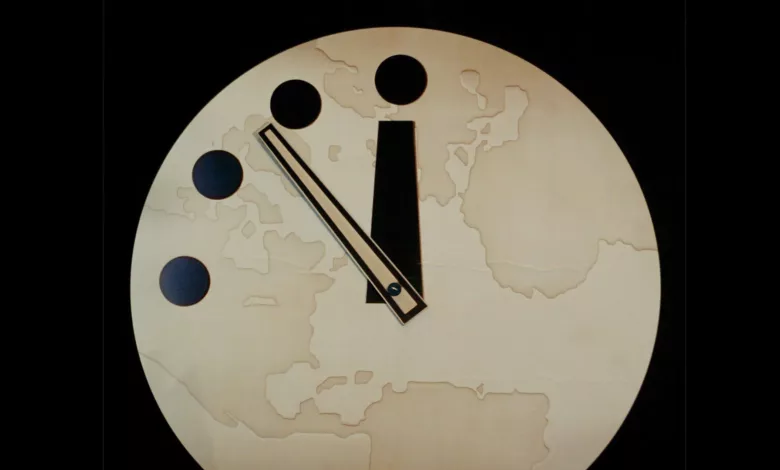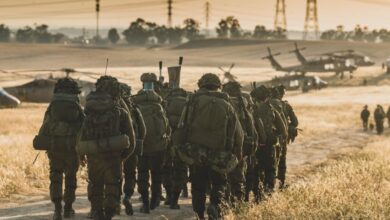
The Doomsday Clock might not stop, but if one were to stop and ponder, if we could leave aside just for a minute our daily grind – jobs, work, social media, news, phones, technology, and so much more that has become part of our lives without which we would not be able to function, then one would be able to comprehend how close we may be as humanity to annihilation.
Why do I say so? Well, it is not just me but also a group created by Manhattan Project scientists at the University of Chicago (talk about scientific discoveries) who helped build the atomic bomb but opposed using it against people.
Albert Einstein and the University of Chicago scientists founded the same in 1945, and the Bulletin of the Atomic Scientists created the Doomsday Clock two years later.
They use the imagery of the apocalypse (midnight) and the contemporary idiom of nuclear explosion (countdown to zero) to convey threats to humanity and the planet.
The Doomsday Clock is set annually by the Bulletin’s Science and Security Board in consultation with its Board of Sponsors, which includes 10 Nobel laureates.
The Clock has become a universally acknowledged indicator of the world’s vulnerability to the global catastrophe caused by manmade technologies.
The Doomsday clock hands are set by this same group called the Bulletin of the Atomic Scientists.
So what is the Doomsday Clock?
The Doomsday Clock is a symbol that conveys how close we are as humans to destroying the world with detrimental technologies of our own making. It cautions how many metaphorical “minutes to midnight” humanity has left.
Set every year by the Bulletin of the Atomic Scientists; it is intended to warn the public and inspire action.

How Close Did Humanity Come To Doomsday?
1947 – the year it was created, the placement of the Doomsday Clock was on the basis of the threat posed by nuclear weapons, which Bulletin scientists regarded as the greatest danger to humanity.
2007 – the Bulletin began to include catastrophic upheavals from climate change in its hand-setting deliberations.
1991 – is the furthest the clock has been set, which was 17 minutes to midnight, in 1991, after the collapse of the Soviet Union and the signing of the Strategic Arms Reduction Treaty.
1953 – the closest the clock has ever been set was at two minutes to midnight— when the U.S. and Soviet Union both tested thermonuclear weapons.
2018 – citing “a breakdown in the international order” of nuclear actors and the continuing lack of action on climate change.
2020 – the clock moved the closest it ever was: 100 seconds to midnight.
2023 – A time of unprecedented danger: It is 90 seconds to midnight

2023 Doomsday Clock Announcement
January 24, 2023
The reasons why in the new year (still), they have moved the hands of the Doomsday Clock forward is mainly, although they have maintained it, not exclusively because of the mounting dangers that the war in Ukraine has the potential to throw up.
The second reason is global carbon dioxide emissions from burning fossil fuels, which were at an all-time high in 2021, rebounded from the COVID economic decline, and continued to rise in 2022 and hit another record high.
A rise in the United States, India, and elsewhere outweighed a decline in Chinese emissions.
Hence, the Clock now stands at 90 seconds to midnight—the closest to global catastrophe it has ever been.
Why Is The Clock Hands Closest It Has Ever Been?
The war in Ukraine, it seems, is all set to enter a second horrifying year, with both sides sure they can win. The war has put at stake Ukraine’s sovereignty and broader European security arrangements that have been mainly held since World War II ended.
Also, Russia‘s war on Ukraine has raised deep questions about how states interact; it has shown the eroding norms of international conduct that underplay successful responses to various global risks.
The group was formed by the very people who made the atomic bomb but vehemently opposed the use of it on people. Hence the fact that Russia has numerous times threatened to use nuclear weapons in the war with Ukraine is a terrible risk that not only the two countries face but also the rest of the world.
Russia’s recent actions violate Moscow’s decades of commitments. Russia joined the United States and the United Kingdom in Budapest, Hungary, in 1994 to solemnly state that it would “respect the independence, sovereignty and the existing borders of Ukraine” and “refrain from the threat or use of force against the territorial integrity or political independence of Ukraine.”
These assurances by Russia were made explicitly on the understanding that Ukraine would renounce nuclear weapons on its soil and sign the Nuclear Non-Proliferation Treaty—both of which Ukraine did.

On the other hand, Russia has also brought its war to the Chornobyl and Zaporizhzhia nuclear reactor sites, thus violating international protocols and risking the widespread release of radioactive materials and the efforts by the International Atomic Energy Agency to secure these plants so far have been rebuffed.
As Russia’s war on Ukraine has entered its second year, the last remaining nuclear weapons treaty between Russia and the United States, New START, stands in peril.
Unless the two parties restart negotiations and find a basis for further reductions, the treaty will expire in February 2026.
If this fails to happen, it would eliminate mutual inspections, deepen mistrust, spur a nuclear arms race, and heighten the possibility of a nuclear exchange.
In fact, in August last year, the U.N. Secretary-General Antonio Guterres warned the world has entered “a time of nuclear danger not seen since the height of the Cold War.”

The War and Its Effects On Global Climate Change
The effects of the war are not limited to just an increased nuclear danger, but it also undermines global efforts to combat climate change.
Since the war began and the energy crises deepened, countries dependent on Russian oil and gas have strived to diversify their supplies and suppliers, which has led to expanded investment in natural gas, precisely when such investment should have been shrinking.
Biological Warfare
In the context of an ongoing war which could escalate at any time, considering the backdrop of nuclear threats, Russia’s false accusations that Ukraine intended to use radiological dispersal devices, chemical weapons, and biological weapons take on new meaning.
The continuing stream of disinformation regarding bioweapons laboratories in Ukraine raises concerns that Russia may be considering deploying such weapons, which many experts believe it continues to develop.
Vassily Nebenzia, Russia’s ambassador to the United Nations, at a meeting of the Security Council on March 11, 2022accused the United States and Ukraine of concealing a bioweapons program. U.N. Photo/Evan Schneider

Thus, in a nutshell, the Doomsday clock’s hands are the closest it has ever been: 90 seconds to midnight are because Russia’s invasion of Ukraine has raised the risk of nuclear weapons use, increased the spectre of biological and chemical weapons use, put in limbo the world’s response to climate change, and hampered international efforts to deal with other global concerns.
The invasion and annexation of Ukrainian territory have also disregarded international norms in ways that may motivate others to take actions that challenge previous understandings and threaten stability.
Hence, the interrelated events and the dangers global dangers they exhibit, focused action is required, and every second counts toward Doomsday Clock!






